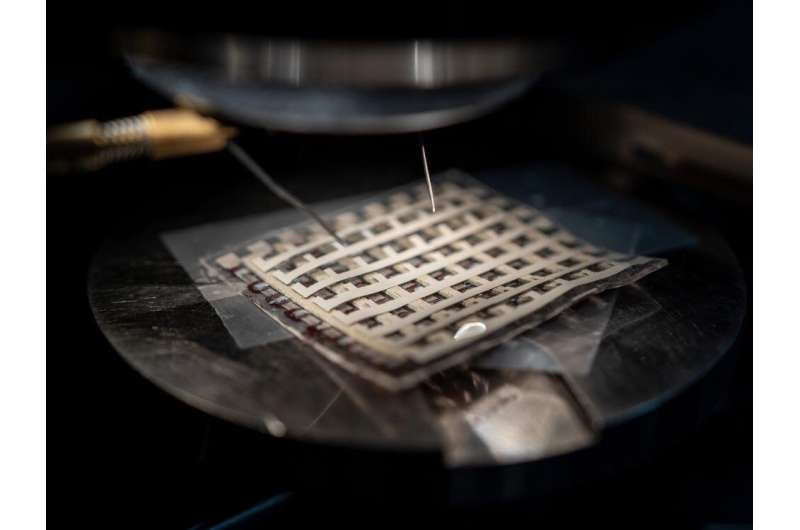New method can scale, simplify manufacture of stretchy semiconductors

Soft, elastic semiconductors and circuits could advance wearable medical devices and other emerging technologies, but the high-performance electronics are difficult and expensive to manufacture. A Penn State-led research team plans to make the process easier and cheaper with a new manufacturing method.
They published their approach Nov. 28 in Nature Electronics.
Known as the lateral phase separation induced micromesh (LPSM) strategy, the process involves mixing a semiconductor and an elastomer—or rubber—and spin coating the liquid mixture precursors to fabricate rubbery semiconductor thin films. The spin coated film automatically triggers a mechanism called lateral phase separation, which generates micromesh structures within seconds.
The micromesh materials, which resemble a basket weave, are integral for allowing for mechanical stretch, according to Cunjiang Yu, Dorothy Quiggle Career Development Associate Professor of Engineering Science and Mechanics and associate professor of biomedical engineering and of materials science and engineering.
"The LPSM films used to create the stretchy semiconductors promise simultaneous efficient charge transport and mechanical stretchability," Yu said.
Researchers used the LPSM method to create both p-type and n-type semiconductors, whose majority charge carriers are holes and electrons, respectively. Using both semiconductor types, according to Yu, researchers created soft electronic devices such as transistors, inverters and photodetectors that can stretch to a large extent while maintaining functionality. In addition, the researchers created a rubbery bioelectronic device known as an epicardial patch and implanted it in a rodent.
"As the rat's heart expanded and contracted with its heartbeat, the entirely rubber-based epicardial patch also moved with it," Yu said. "We recorded multiple channels of electrophysiology readings simultaneously with the patch. Recording at multiple sites of the heart is important to identify cardiac problems such as arrhythmia."
Going forward, researchers hope to further optimize the LPSM process and to investigate the detailed properties of the semiconductor materials, according to Yu. They also plan to employ the LPSM semiconducting thin film in various high-performance integrated electronics and functional systems.
More information: Ying-Shi Guan et al, Elastic electronics based on micromesh-structured rubbery semiconductor films, Nature Electronics (2022). DOI: 10.1038/s41928-022-00874-z



















